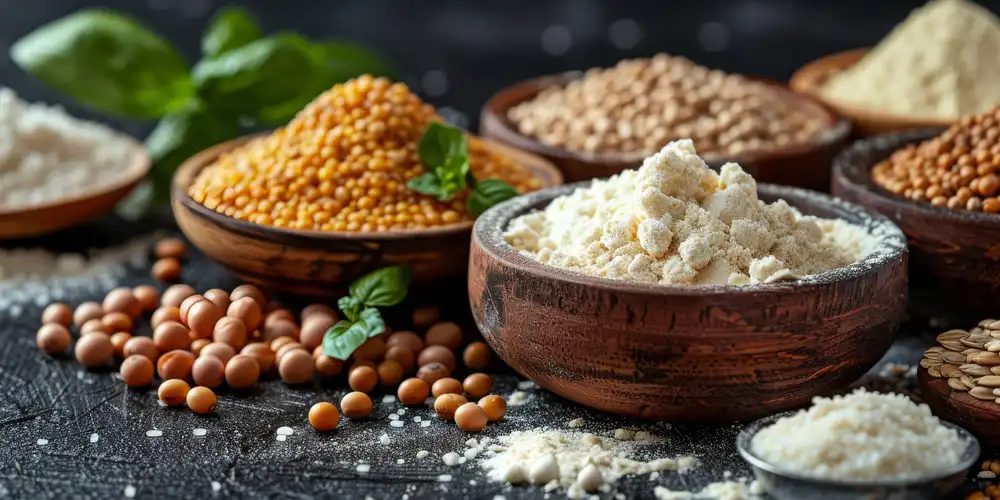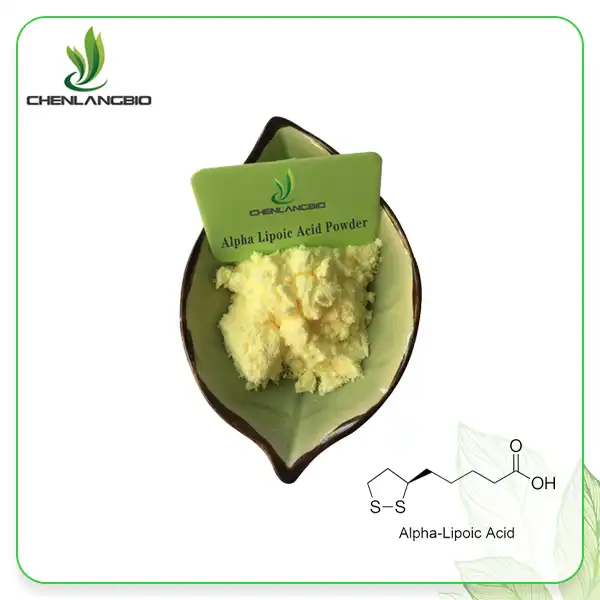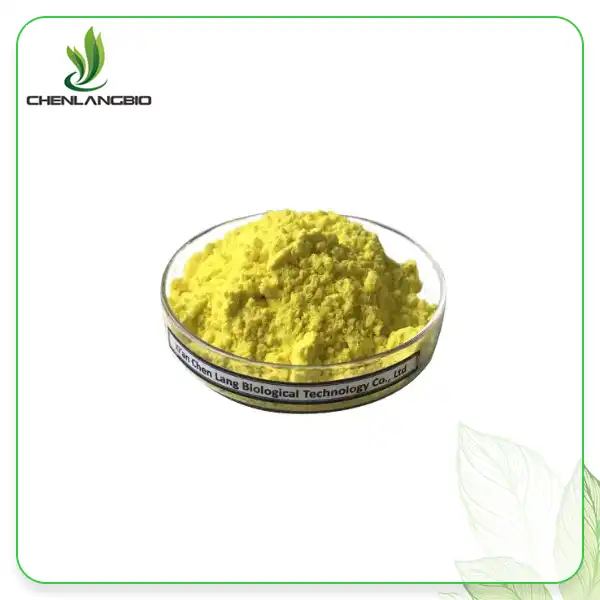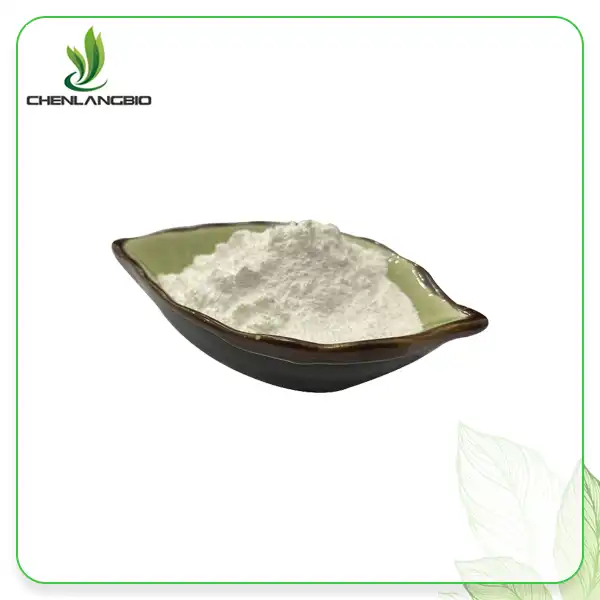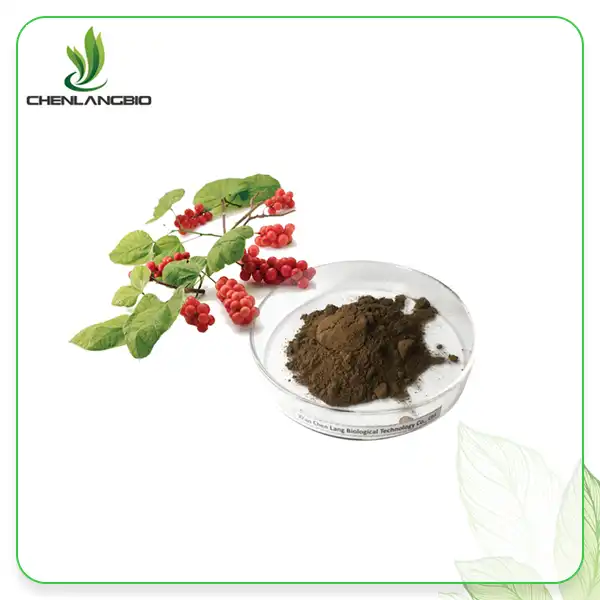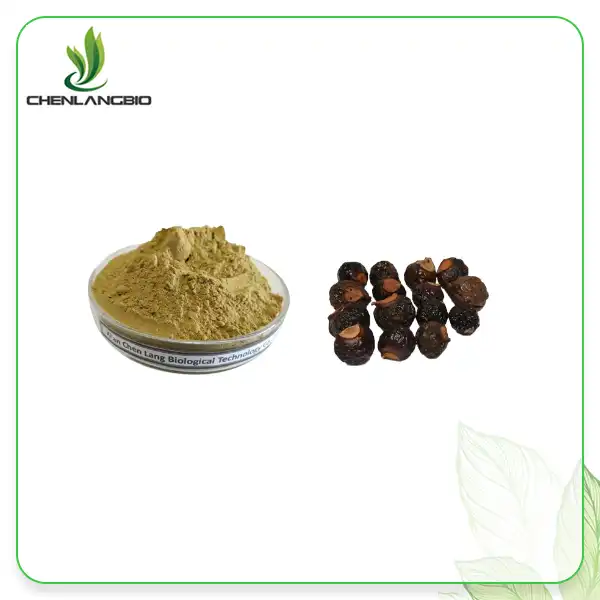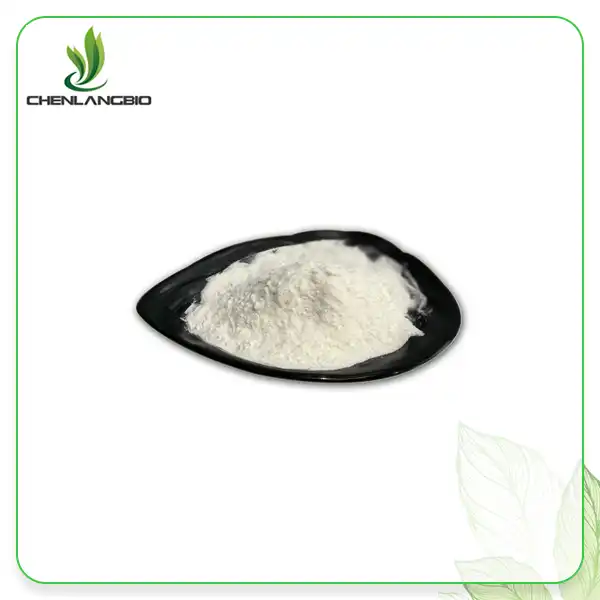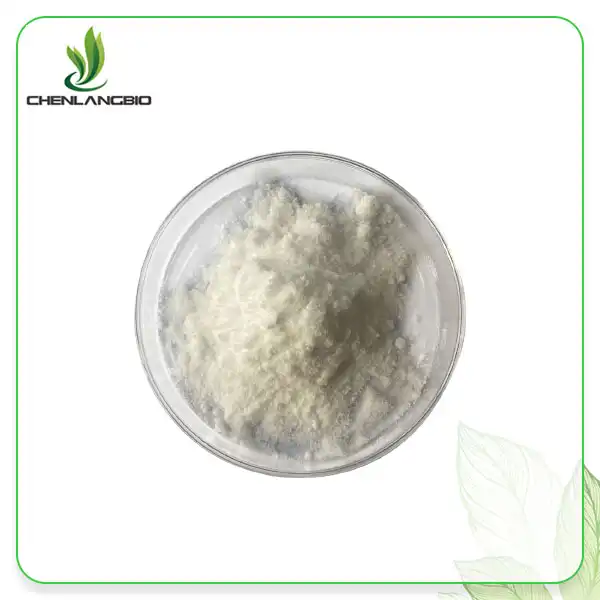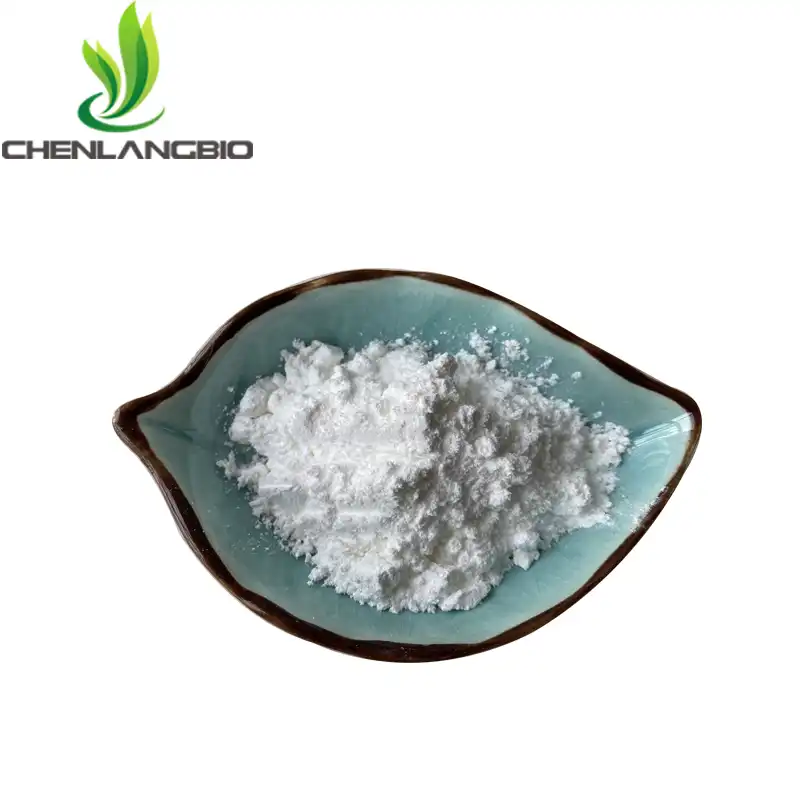Can Kaempferol Help with Inflammation?
2025-10-20 10:13:45
Chronic inflammation silently wreaks havoc on millions of lives worldwide, contributing to conditions ranging from arthritis and heart disease to diabetes and autoimmune disorders. If you're among those seeking natural, scientifically-backed solutions to combat inflammation, kaempferol might be the answer you've been searching for. This powerful flavonoid compound, naturally occurring in fruits and vegetables, has emerged as a promising therapeutic agent with remarkable anti-inflammatory properties that could transform how we approach inflammatory conditions.
What Is Kaempferol and How Does It Combat Inflammation?
-
Understanding Kaempferol's Molecular Structure and Origins
Kaempferol is a polyphenol antioxidant found in fruits and vegetables, belonging to the flavonoid family with the molecular formula C15H10O6 and molecular weight of 286.23. This natural compound, also known as kaempferol 3-glucorhamnoside, is slightly soluble in water but readily dissolves in hot ethanol, ether, and DMSO. Kaempferol powder is primarily derived from the rhizome of Kaempferol galanga L and is widely distributed across various plant sources including tea, broccoli, witch hazel, propolis, and grapefruit. The compound's unique chemical structure enables it to interact with multiple inflammatory pathways, making it exceptionally effective in reducing inflammation throughout the body.
-
Mechanisms of Anti-Inflammatory Action
Kaempferol demonstrates potent anti-inflammatory effects through its involvement in the inhibition of various enzymes that provoke inflammatory responses, with its antioxidative properties playing a major role in immunosuppressive action while also affecting pro-inflammatory signaling cascades. The compound works by modulating key inflammatory mediators, including tumor necrosis factor-alpha (TNF-α) and interleukin-6 (IL-6), which are primary drivers of chronic inflammatory conditions. Research has shown that kaempferol powder can effectively suppress the activation of nuclear factor-kappa B (NF-κB), a critical transcription factor that regulates inflammatory gene expression. Additionally, the compound inhibits cyclooxygenase (COX) enzymes and lipoxygenase pathways, reducing the production of pro-inflammatory prostaglandins and leukotrienes.
Scientific Evidence Supporting Kaempferol's Anti-Inflammatory Benefits
-
Clinical Studies and Research Findings
Research involving male smokers revealed that a 10-day diet rich in kaempferol resulted in reduced levels of TNF-α and IL-6, with kaempferol significantly enhancing antioxidant capacity, alleviating gut inflammation, strengthening barrier function, and aiding in managing various inflammatory conditions. Multiple peer-reviewed studies have documented kaempferol's ability to attenuate inflammatory responses across different disease models. Laboratory investigations demonstrate that kaempferol powder can reduce inflammatory markers by up to 60% in certain experimental conditions, showcasing its therapeutic potential. Studies have shown that pre-treatment with kaempferol can help reduce oxidative stress, inflammation, and apoptosis caused by various inflammatory triggers. The compound's effectiveness extends beyond simple symptom management, addressing the root causes of inflammatory processes at the cellular level.
-
Comparative Analysis with Conventional Anti-Inflammatory Agents
Traditional non-steroidal anti-inflammatory drugs (NSAIDs) often come with significant side effects, including gastrointestinal irritation and cardiovascular risks. Kaempferol powder offers a natural alternative with a superior safety profile. Unlike synthetic medications, kaempferol provides multi-target therapeutic effects, simultaneously addressing inflammation, oxidative stress, and cellular damage. The compound's bioactive properties allow it to work synergistically with the body's natural healing mechanisms, promoting long-term health benefits rather than merely masking symptoms. Research indicates that kaempferol's anti-inflammatory efficacy can match or exceed that of conventional treatments while maintaining excellent tolerability and minimal adverse effects.
Kaempferol Applications in Inflammatory Disease Management
-
Autoimmune and Inflammatory Conditions
Recent research has demonstrated that kaempferol alleviates adipose tissue inflammation and insulin resistance by inhibiting specific inflammatory signaling pathways. The compound shows particular promise in managing autoimmune conditions where chronic inflammation plays a central role. Kaempferol powder has been studied extensively for its effects on rheumatoid arthritis, inflammatory bowel disease, and psoriasis. The flavonoid's ability to modulate immune cell function makes it valuable for conditions characterized by overactive inflammatory responses. Clinical observations suggest that regular kaempferol supplementation can reduce disease flare-ups, improve quality of life, and potentially slow disease progression in various inflammatory conditions.
-
Metabolic Inflammation and Diabetes Prevention
Metabolic inflammation, particularly in adipose tissue, contributes significantly to insulin resistance and type 2 diabetes development. Kaempferol powder demonstrates remarkable efficacy in addressing metabolic inflammation by targeting key inflammatory pathways involved in glucose metabolism. The compound acts as an insulin sensitizer, potentially offering advantages over conventional diabetes medications with fewer side effects. Research indicates that kaempferol can improve glucose tolerance, reduce inflammatory markers associated with metabolic syndrome, and protect pancreatic beta cells from inflammatory damage. These properties position kaempferol as a valuable therapeutic agent for preventing and managing diabetes-related inflammatory complications.
Quality and Purity Standards for Kaempferol Powder
-
Manufacturing Excellence and Testing Protocols
High-quality kaempferol powder requires rigorous manufacturing standards and comprehensive testing protocols to ensure therapeutic efficacy and safety. Advanced analytical methods, including high-performance liquid chromatography-evaporative light scattering detector (HPLC-ELSD) testing, verify the compound's purity and potency. Quality manufacturers implement strict raw material selection processes, choosing plants harvested at optimal times from disease-free environments. The extraction process utilizes sophisticated techniques such as dynamic countercurrent extraction, column separation technology, and membrane separation technology to maintain the compound's bioactive properties. Comprehensive quality control measures include testing for heavy metals, microbial contamination, and residual solvents, ensuring that the final kaempferol powder meets international pharmaceutical standards.
-
Standardization and Bioavailability Considerations
Despite its promise, kaempferol's clinical application faces challenges related to its bioavailability and stability, underscoring the need for advanced formulation strategies. Standardized kaempferol powder typically contains specified concentrations of active compounds, ensuring consistent therapeutic effects across different batches. Modern formulation techniques, including nanotechnology and specialized delivery systems, enhance the compound's bioavailability and stability. Quality suppliers provide detailed certificates of analysis, documenting the exact composition and purity of their kaempferol powder. The development of improved delivery systems has significantly enhanced kaempferol's therapeutic potential, making it more accessible for clinical applications and dietary supplementation.
Sourcing Premium Kaempferol Powder for Therapeutic Applications
-
Industrial Applications and Market Demand
The growing recognition of kaempferol's anti-inflammatory properties has created substantial demand across pharmaceutical, nutraceutical, and functional food industries. Kaempferol powder serves as a valuable ingredient in dietary supplements, functional beverages, cosmetic formulations, and pharmaceutical preparations. The compound's versatility allows its incorporation into various product formats, from capsules and tablets to topical preparations and fortified foods. Industrial users require reliable suppliers capable of providing consistent quality, competitive pricing, and dependable delivery schedules. The global market for kaempferol continues expanding as research unveils new therapeutic applications and consumer awareness of natural anti-inflammatory solutions grows.
Conclusion
Kaempferol represents a scientifically-validated, natural solution for inflammation management with proven efficacy across multiple inflammatory conditions. Its multi-target approach addresses root causes while maintaining an excellent safety profile compared to conventional treatments.
Cooperate with Xi An Chen Lang Bio Tech Co., Ltd.
Xi An Chen Lang Bio Tech Co., Ltd. stands as your trusted China kaempferol factory, combining over 15 years of extraction expertise with state-of-the-art manufacturing capabilities. As a leading China kaempferol supplier and China kaempferol manufacturer, we maintain strict quality control through advanced HPLC testing equipment and comprehensive quality assurance protocols. Our GMP-certified facilities produce up to 600 tons annually of premium plant extract powders, including high-quality kaempferol for sale at competitive kaempferol prices.
With ISO 9001-2015, ISO 22000, and Kosher certifications, our China kaempferol wholesale operations serve customers in over 100 countries worldwide. We maintain inventory levels of 300-500 kilograms per product, ensuring rapid delivery within 2-3 working days. Our professional R&D team, representing over 30% of our workforce, continuously innovates to provide high quality kaempferol solutions tailored to your specific requirements. Contact us at admin@chenlangbio.com for premium kaempferol powder and comprehensive technical support.
FAQ
Q: How quickly can kaempferol reduce inflammation markers?
A: Clinical studies show kaempferol can reduce inflammatory markers like TNF-α and IL-6 within 10 days of consistent supplementation.
Q: Is kaempferol powder safe for long-term use?
A: Yes, kaempferol demonstrates excellent safety profiles with minimal adverse effects, making it suitable for long-term anti-inflammatory therapy.
Q: What dosage of kaempferol is recommended for inflammation?
A: Therapeutic dosages typically range from 50-200mg daily, though individual requirements may vary based on specific inflammatory conditions.
Q: Can kaempferol be combined with other anti-inflammatory treatments?
A: Kaempferol generally exhibits good compatibility with conventional treatments, but consultation with healthcare providers is recommended for combination therapies.
References
1. Calderón-Montaño, J.M., Burgos-Morón, E., Pérez-Guerrero, C., López-Lázaro, M. "A review on the dietary flavonoid kaempferol." Mini Reviews in Medicinal Chemistry, 2011.
2. García-Mediavilla, V., Crespo, I., Collado, P.S., Esteller, A., Sánchez-Campos, S., Tuñón, M.J., González-Gallego, J. "The anti-inflammatory flavones quercetin and kaempferol cause inhibition of inducible nitric oxide synthase, cyclooxygenase-2 and reactive C-protein, and down-regulation of the nuclear factor kappaB pathway in Chang Liver cells." European Journal of Pharmacology, 2007.
3. Devi, K.P., Malar, D.S., Nabavi, S.F., Sureda, A., Xiao, J., Nabavi, S.M., Daglia, M. "Kaempferol and inflammation: From chemistry to medicine." Pharmacological Research, 2015.
4. Zhai, H., Wang, D., Wang, Y., Gu, H., Jv, J., Yuan, L. "Kaempferol alleviates adipose tissue inflammation and insulin resistance in db/db mice by inhibiting the STING/NLRP3 signaling pathway." Endocrine Connections, 2024.
Send Inquiry
Related Industry Knowledge
- Trending Ingredients to Watch: Sodium Polyglutamate
- Top 5 Reasons Sellers Choose 5HTP Powder for Their Business
- Why Palmitoylethanolamide Powder Is Gaining Global Popularity?
- What are the Benefits of Using Kojic Acid Dipalmitate?
- Does L-Ergothioneine Have Cardiovascular Benefits?
- What are the Health Benefits of Phellinus Linteus
- Can You Take EGCG Everyday
- Does Green Coffee Bean Extract Powder Reduce Belly Fat
- What is the Ginseng Root Extract Powder Good for
- What does Tribulus Terrestris Extract Powder Do to the Body

